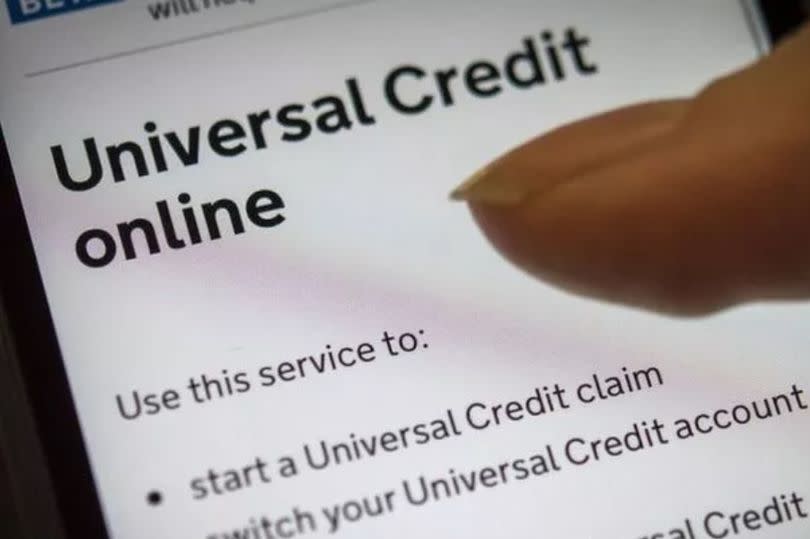There are roughly two million Brits still claiming any one of six legacy benefits from the Department for Work and Pensions (DWP), all of whom are set to get a letter as part of the “manage migration” to the one-for-all Universal Credit (UC) system. Due to a cost-saving measure, the deadline to make this move has been brought forward to the end of 2025, when all ;egacy claimants will have three months to migrate or lose their benefits entirely.
As part of the sped-up rollout of UC following the pandemic, over a million people have been sent a “migration notice” by the DWP telling them they have three months to apply, or their benefit payments will stop. The six affected legacy benefits are: working tax credit, child tax credit, housing benefit, income support, jobseeker’s allowance and income-related employment and support allowance.
Some moving to the one-for-all benefit system will see their monthly payments increase or discover they are eligible for other financial help, but there is no need to worry if your Universal Credit payment is lower than your current benefit entitlement. To prevent people from missing out, the DWP will top-up the difference through the “transitional element.”
READ MORE: Dad gets ‘£8,000 extra’ with Pension Credit and benefits after Martin Lewis’ MSE tip
This element is an extra payment on top of the monthly UC payment, but it can be confusing to know who will get this top-up and what the qualifying criteria are. Amid a wider series of updates to various benefits at the DWP under the new Labour administration, the department has spelled out how the transitional element is calculated and who stands to benefit.
How the ‘transitional element’ is calculated

Every Universal Credit claimant’s benefit entitlement is calculated every month based on each individual’s financial and life circumstances. Each month is termed an “assessment period” and the amount of money received is based on income, housing situation, child dependents, caring responsibilities, and any disabilities or health conditions that affect individuals’ ability to work.
This is then checked by the DWP against their own data on income-related legacy benefits, like ESA, JSA, and income support. They will then also ask local councils for information on housing benefit, as well as checking with HM Revenue and Customs for their child and working tax credit data.
If the total you received from these benefits is higher than your UC entitlement, the DWP will top-up your payment to make up the difference. However, people who do not tell the DWP about all of their responsibilities could miss out on essential financial help.
Which legacy benefit claimants get the ‘transitional element’

For example, even if you do not qualify for Carer’s Allowance, which has a low weekly earnings threshold, you should still tell the DWP, as you are likely to get an extra payment through the carer element of UC. Equally, it is important to tell them if you are living with your partner, as the benefit is calculated per household and their circumstances could increase, or decrease, your benefit entitlement.
Yet this also means that couple that live apart will not get this element, the DWP explained in their updated guidance: “If you and your partner live apart and claim tax credits as a couple, you’ll be treated as 2 separate households on Universal Credit. In these circumstances, you and your partner would not be eligible for the transitional element.
Parents of adults aged under 19 who are living at home while enrolled in full-time higher education can also receive a “child element” as part of their entitlement, however, this might not apply to everyone. The department stated: “Even if you currently receive a child element on your existing benefits or tax credits, the transitional element will be calculated without it if your child is not eligible under Universal Credit rules.”
Anyone receiving the severe disability premium will also have their monthly payments protected by the transitional element, with it being automatically included as part of your Universal Credit transition.
Due to the way Universal Credit is calculated, you should tell the DWP if anyone in your home is claiming contribution-based or New Style-ESA with limited capability for work or work-related activity, as this will be included in your top-up. People with a limited work capacity will get the difference between their old and new payments.
And for those moving over from tax credits, the DWP has helpfully explained how your entitlement is calculated in the transition.
The DWP explains: “HMRC calculate tax credits using your annual income. They do not use actual current year income because this is not known in advance. “”
Therefore, your indicative Universal Credit award, including the transitional element calculation, will either be based on your:
You can find out more about transitional protection in the Universal Credit migration here.
EMEA Tribune is not involved in this news article, it is taken from our partners and or from the News Agencies. Copyright and Credit go to the News Agencies, email news@emeatribune.com Follow our WhatsApp verified Channel





